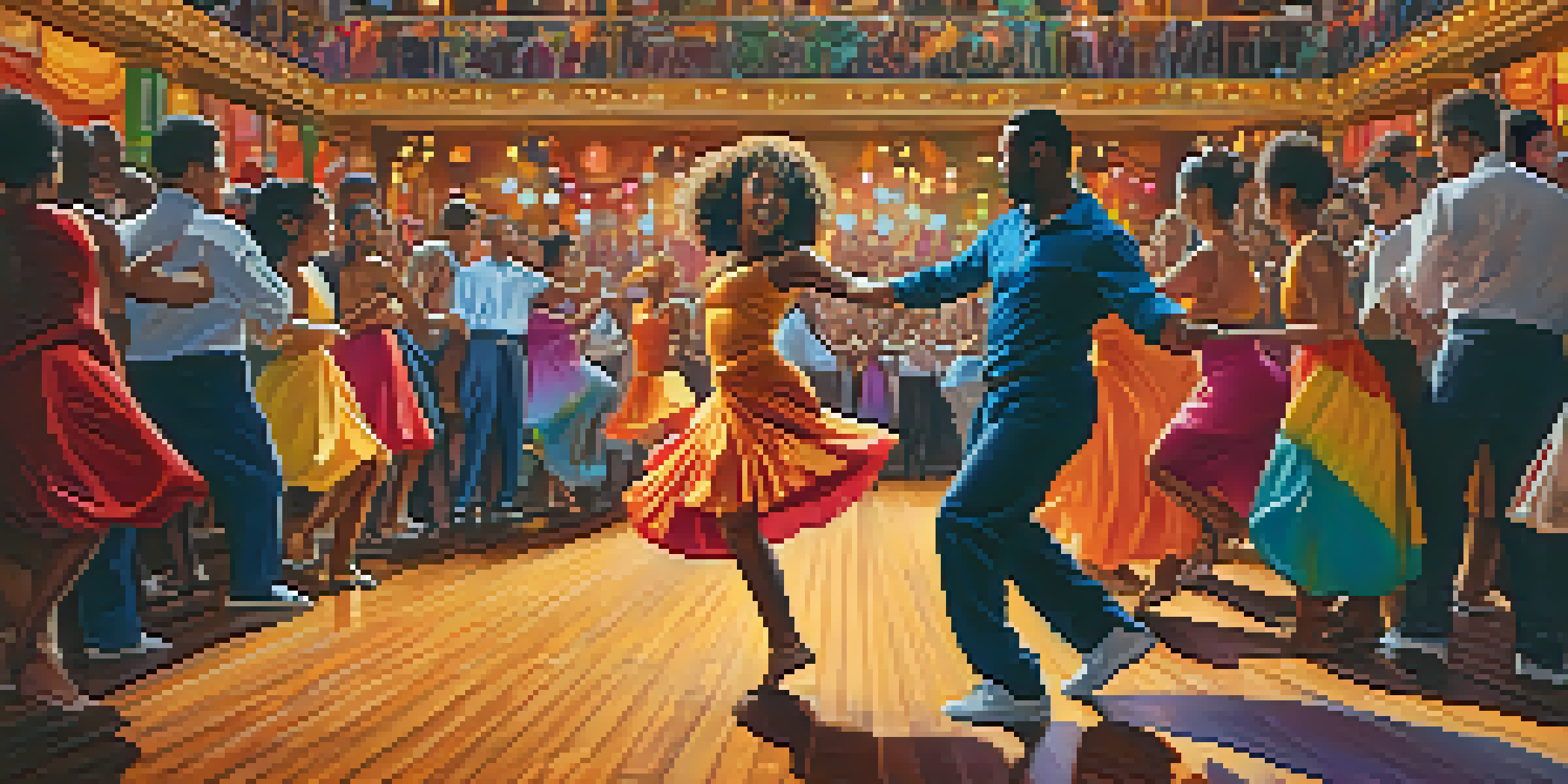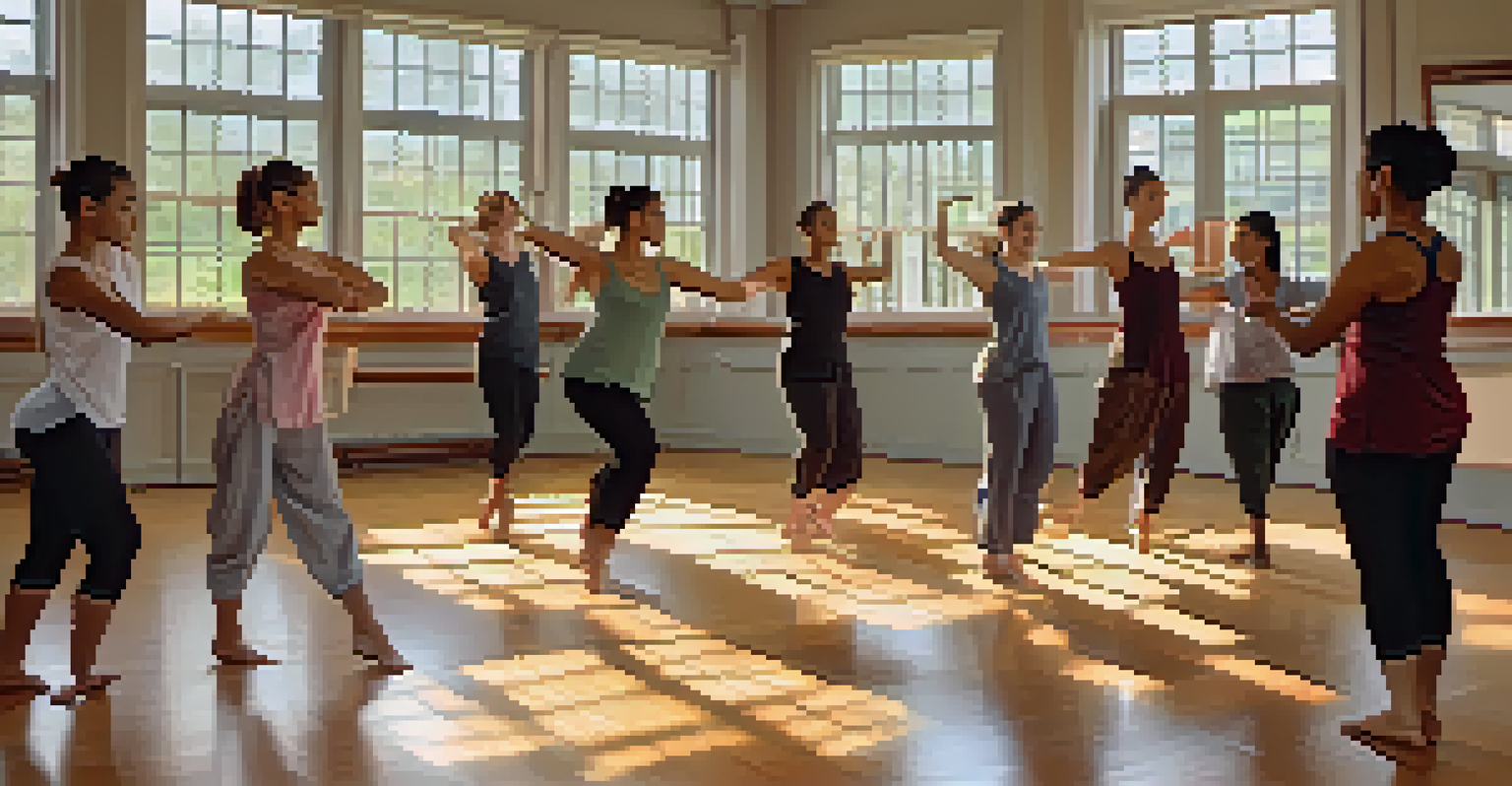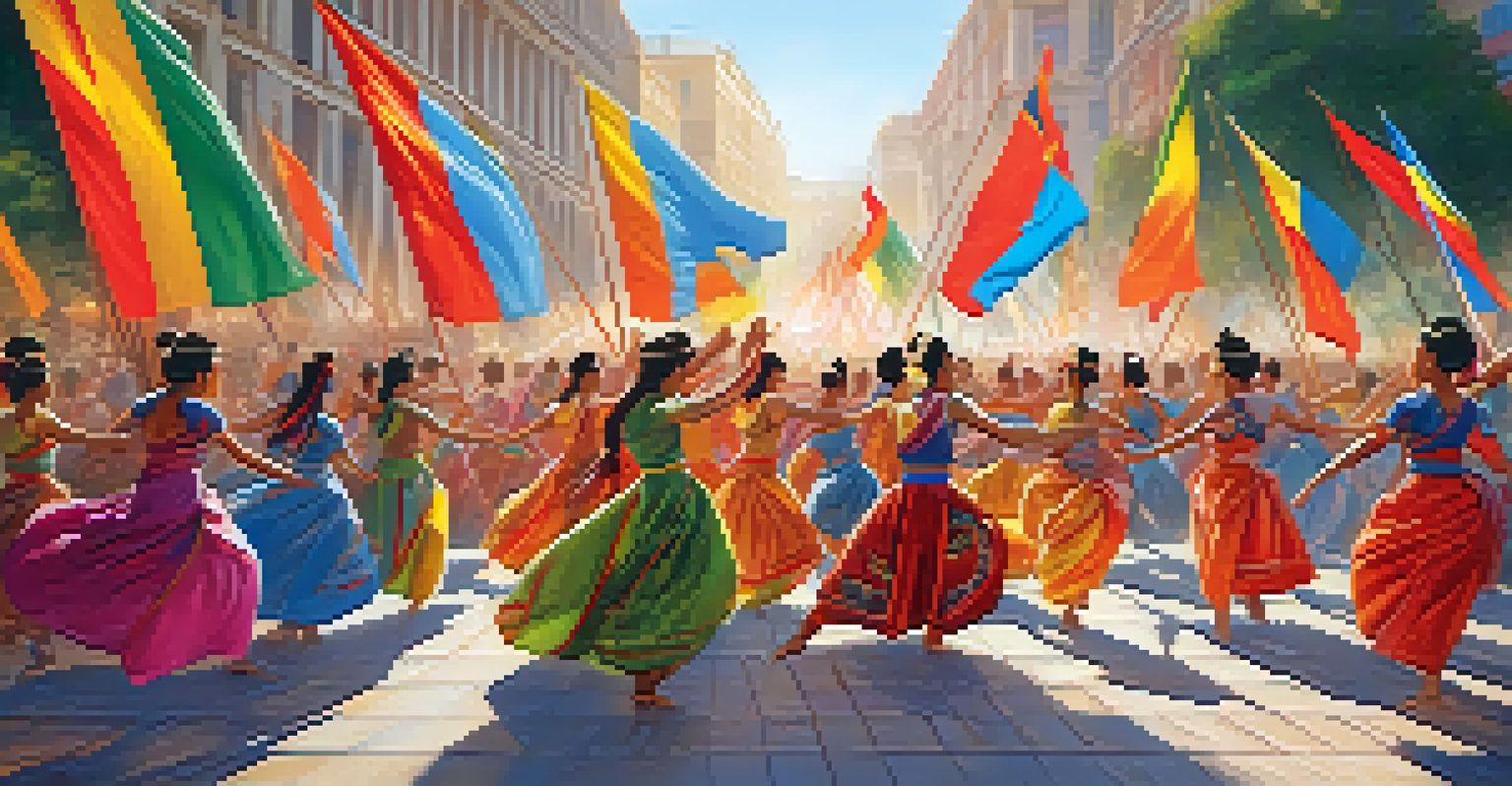The Influence of Globalization on Dance and Performance Art

Understanding Globalization in the Arts
Globalization refers to the interconnectedness of cultures around the world, often facilitated by technology and travel. In the realm of dance and performance art, this means that artists can share their work with a global audience, breaking down geographical barriers. This exchange not only promotes cultural appreciation but also influences the evolution of various art forms by blending different styles and traditions.
Art is a universal language that transcends all boundaries.
Think of a vibrant salsa performance infused with elements of hip-hop or Bharatanatyam dance incorporating contemporary moves. Such fusions demonstrate how artists are creatively responding to global influences, reshaping their narratives and techniques. The result is a dynamic art scene where traditional and modern forms coexist, reflecting the complexity of our global society.
However, this blending of cultures can lead to concerns about cultural appropriation, where elements from one culture are used without proper acknowledgment or respect. This highlights the importance of dialogue and understanding among artists to ensure that globalization leads to mutual respect and enrichment rather than exploitation.
The Role of Technology in Dance Globalization
Technology plays a crucial role in the globalization of dance and performance art, allowing for instant sharing of performances worldwide. Social media platforms, streaming services, and online tutorials have made it easier for dance enthusiasts to learn, share, and collaborate across borders. This digital age has transformed how artists connect, enabling them to reach audiences far beyond their local communities.

For instance, platforms like YouTube and TikTok have birthed viral dance trends, transcending cultural boundaries and creating a shared global language of movement. A simple dance challenge can ignite a worldwide phenomenon, illustrating how interconnected our experiences have become. This not only democratizes dance but also invites diverse interpretations and recreations from different backgrounds.
Globalization Blends Dance Cultures
Globalization fosters the fusion of diverse dance styles, creating innovative performances that reflect our interconnected world.
However, while technology enhances accessibility, it also raises questions about authenticity and the commercialization of art. As dance becomes more of a product consumed online, artists must navigate the balance between creative expression and audience expectations, ensuring that their work retains its cultural significance.
Cultural Exchange and Collaboration in Dance
Globalization fosters cultural exchange, encouraging artists to collaborate across borders. This collaborative spirit often leads to innovative works that blend various cultural elements, enriching the dance and performance art landscape. For example, collaborations between traditional African dancers and modern choreographers create unique pieces that honor heritage while pushing artistic boundaries.
Culture is the widening of the mind and of the spirit.
These partnerships not only create captivating performances but also promote understanding and respect among cultures. When artists from different backgrounds come together, they share stories, techniques, and philosophies, resulting in a richer, more diverse artistic expression. This exchange can spark dialogues about cultural identity and representation within the arts.
However, it's essential that these collaborations are approached thoughtfully, ensuring that each culture's contributions are respected and valued. By prioritizing genuine engagement over superficial blending, artists can create impactful works that celebrate diversity and foster global connections.
The Impact of Global Events on Dance
Global events, such as the Olympics or international festivals, play a significant role in promoting dance as a universal language. These platforms offer artists the opportunity to showcase their work on a global stage, attracting attention to their cultural heritage. The exposure gained from such events can lead to increased interest in specific dance forms, encouraging preservation and innovation.
For instance, the inclusion of traditional dances in major sporting events allows viewers to appreciate the rich cultural histories behind each performance. This visibility can spark curiosity and inspire audiences to explore different styles, leading to a broader understanding of global diversity in dance. It's a powerful reminder of how art can bridge gaps and foster unity.
Technology Enhances Dance Accessibility
The rise of technology allows dancers to share and learn from a global audience, democratizing the art form and encouraging collaboration.
However, the commercialization of dance in these contexts can sometimes overshadow its cultural significance. As artists strive to appeal to international audiences, they may feel pressured to modify their performances, which can dilute the authenticity of their art. It's vital for event organizers and artists alike to prioritize cultural integrity while celebrating global diversity.
Dance Education in a Globalized World
With globalization, dance education has evolved to include a variety of styles and techniques from around the world. Dance schools now offer classes in everything from traditional folk dances to contemporary street styles, reflecting the diverse interests of students. This broad curriculum not only enriches the educational experience but also prepares dancers to thrive in a globalized art scene.
Moreover, students can now learn from renowned instructors from different countries through online courses and workshops. This access to global expertise allows aspiring dancers to hone their skills and expand their artistic horizons, creating a more interconnected dance community. It’s exciting to think about how this exposure can inspire the next generation of artists.
However, as dance education becomes more globalized, it's crucial to maintain a balance between versatility and cultural richness. Educators must emphasize the importance of understanding the cultural contexts of different dance forms, ensuring that students appreciate the history and significance behind the movements they learn.
Social and Political Commentary in Dance
Dance has long been a medium for social and political commentary, and globalization has amplified this role. Artists are increasingly using their platforms to address global issues, from climate change to social justice, through their performances. This trend highlights the power of dance as a form of expression that transcends language barriers and resonates with diverse audiences.
For example, choreographers may create pieces that reflect the struggles of marginalized communities, drawing attention to important social issues. These performances often serve as calls to action, inspiring audiences to engage with the world around them. Through movement, dancers can convey emotions and messages that words sometimes fail to capture.
Dance as Social and Political Voice
Dance increasingly serves as a powerful medium for social and political commentary, addressing global issues and inspiring action through movement.
However, this approach requires sensitivity and a deep understanding of the subjects being addressed. Artists must ensure that their work does not exploit the very issues they seek to illuminate, fostering a genuine dialogue rather than merely using social themes as a trend. When done thoughtfully, dance can become a powerful tool for change and awareness.
The Future of Dance in a Globalized Context
As globalization continues to shape the world, the future of dance and performance art appears more interconnected than ever. Emerging artists are likely to embrace a fusion of styles, drawing inspiration from diverse cultures to create innovative works. This evolution presents exciting possibilities, as new forms of expression emerge from the blending of traditions and contemporary influences.
Moreover, the growing emphasis on inclusivity and representation in the arts will likely influence the types of narratives explored in dance. Artists may increasingly focus on showcasing a broader range of experiences, reflecting the diverse tapestry of our global society. This shift can lead to richer storytelling and deeper emotional connections with audiences.

However, as we look ahead, it's important for the dance community to remain committed to cultural integrity and respect. By honoring the roots of various dance forms while exploring new directions, artists can create a vibrant future that celebrates the beauty of global diversity in movement.